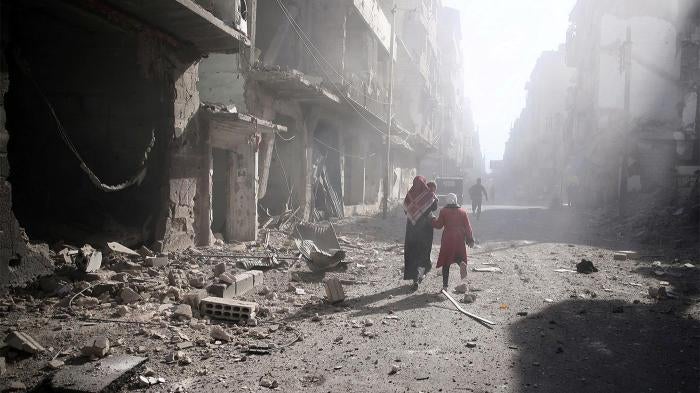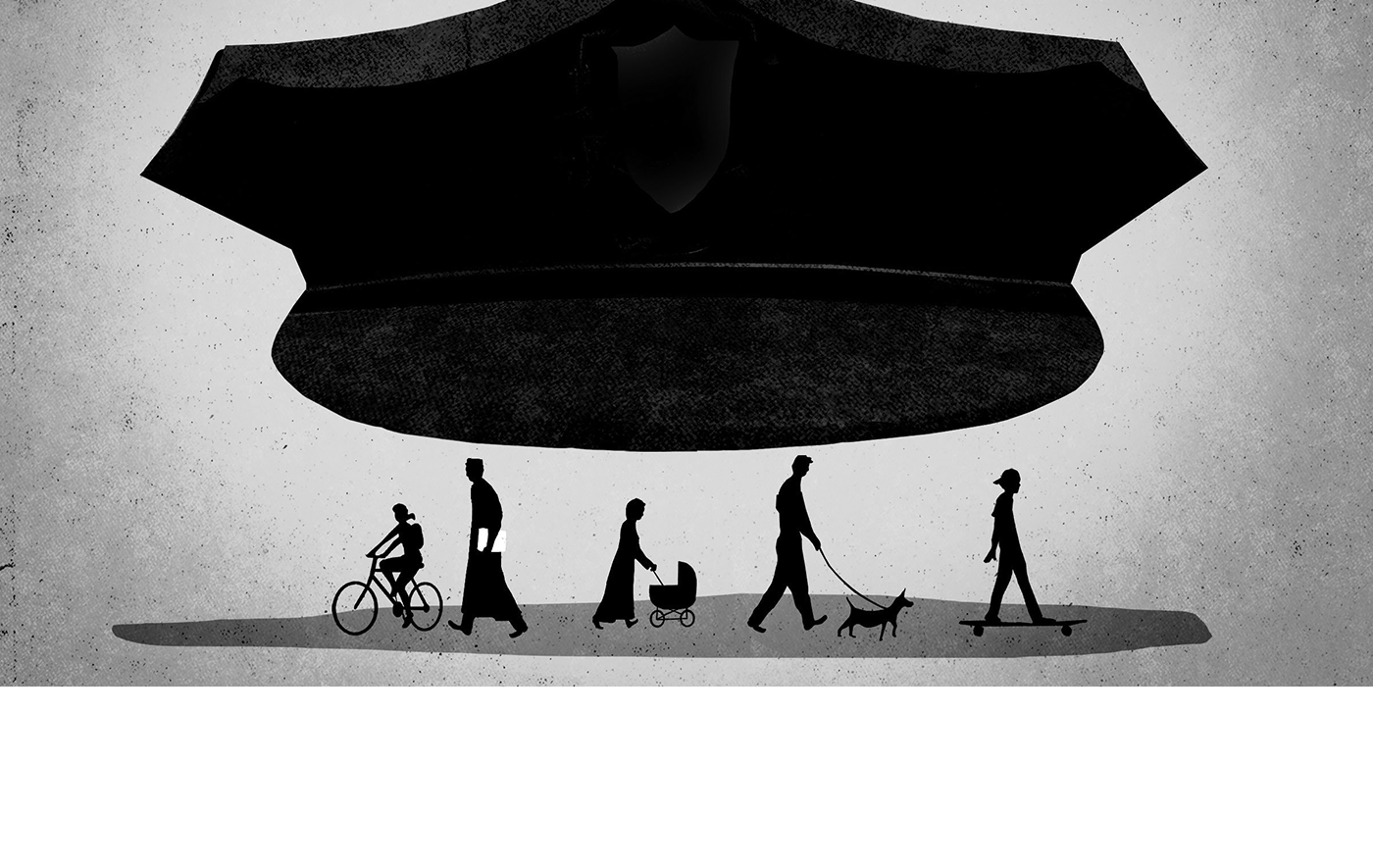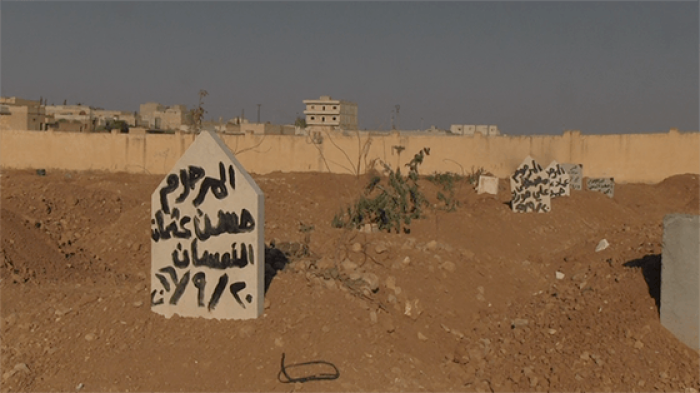Greater United States and Russian engagement on Syria and efforts to reach a political settlement in 2016 failed to significantly reduce egregious violations of human rights and humanitarian law that have come to characterize the armed conflict there.
According to the Syrian Center for Policy Research, an independent Syrian research organization, the death toll from the conflict as of February 2016 was 470,000. The spread and intensification of fighting has led to a dire humanitarian crisis, with 6.1 million internally displaced people and 4.8 million seeking refuge abroad, according to the UN Office for the Coordination of Humanitarian Affairs. By mid-2016, an estimated 1 million people were living in besieged areas and denied life-saving assistance and humanitarian aid.
More than 117,000 have been detained or disappeared since 2011, the vast majority by government forces, including 4,557 between January and June 2016, according to the Syrian Network for Human Rights. Torture and ill-treatment are rampant in detention facilities; thousands have died in detention.
The Islamic State (also known as ISIS), and the former Al-Qaeda affiliate in Syria, Jabhat al-Nusra, which changed its name to Jabhat Fath al-Sham, were responsible for systematic and widespread violations, including targeting civilians with artillery, kidnappings, and executions. Non-state armed groups opposing the government also carried out serious abuses including indiscriminate attacks against civilians, using child soldiers, kidnapping, unlawfully blocking humanitarian aid, and torture.
In its fourth report, released this year, the Joint Investigative Mechanism between the Organisation for the Prohibition of Chemical Weapons (OPCW) and the UN concluded that Syrian government forces used chemicals in an attack in Idlib in March 2015. The inquiry also identified the military units responsible for flights connected to the attacks but could not name the commanders of the units due to the Syrian government’s failure to respond to crucial queries. In an earlier report, the joint inquiry had reached the same conclusion for two other attacks, in 2014 and 2015. The inquiry also previously found that ISIS had used sulfur mustard gas in an attack on areas held by armed opposition groups in August 2015.
On October 28, Russia lost its seat at the Human Rights Council after failing to secure enough votes for re-election from UN member states. Several human rights and humanitarian relief organizations, including Human Rights Watch, had urged UN member states to hold Russia accountable for its involvement in possible war crimes.
Targeting Civilians, Indiscriminate Attacks, Use of Incendiary Weapons, Cluster Munitions, and Chemical Weapons
The number of civilian deaths from airstrikes and artillery decreased slightly following internationally brokered ceasefires in February and September, but only briefly, and unlawful attacks on civilians by all parties to the conflict persisted throughout the year. Syrian and Russian airstrikes continued to target, or indiscriminately strike civilian areas, including homes, markets, schools, and hospitals, using wide-area explosives, barrel bombs, cluster munitions, and flammable incendiary weapons.
In 2016, Human Rights Watch documented several attacks on homes, medical facilities, markets, and schools that appeared to be targeted, including a major airstrike by the Syrian-Russian coalition that hit al-Quds Hospital and surrounding areas on April 27, 2016, killing 58 civilians and patients. In August alone, there were several attacks on health facilities including in Idlib, Aleppo, Hama, and Homs.
Government forces used at least 13 types of internationally banned cluster munitions in over 400 attacks on opposition-held areas between July 2012 to August 2016, killing and injuring civilians, including children. The Syrian-Russian joint military operations, which began on September 30, 2015, have also extensively used internationally banned cluster munitions. Cluster munitions have been outlawed by most countries since their submunitions fall over a wide area, failing to distinguish between fighters and civilians and because many submunitions fail to explode and become de facto land mines that can explode, if disturbed, even after many years if they are not cleared.
Government forces, and their allies, also increasingly resorted to the use of incendiary weapons, with at least 18 documented attacks on opposition-held areas in Aleppo and Idlib between June 5 and August 10. In June, Russia Today broadcasted footage of incendiary weapons—specifically RBK-500 ZAB-2.5SM bombs—being mounted on a Russian Su-34 fighter-ground attack aircraft at a Syrian airbase. Incendiary weapons induce a chain of chemical reactions that ignite fires which are hard to extinguish and cause excruciatingly painful burns that are difficult to treat. A total of 113 countries including Russia (but not Syria) have ratified the Convention on Conventional Weapons protocol prohibiting the use of air-delivered incendiary weapons in areas with a "concentration of civilians."
While Russia continues to deny its involvement in incendiary weapons attacks in Syria, Syria has persistently ignored calls to sign the protocol and its military forces’ use of incendiary weapons has been documented since the end of 2012.
Government forces also continued using toxic chemicals in several barrel bomb attacks in violation of the Chemical Weapons Convention. Syrian government helicopters dropped barrel bombs with toxic chemicals on residential neighborhoods in opposition-controlled parts of Aleppo city on August 10 and September 6.
In a report issued on August 24, 2016, a UN-appointed investigation attributed two chemical weapon attacks earlier in 2016 to the Syrian government and one to ISIS, which is already under UN sanctions.
Unlawful Restrictions on Humanitarian Assistance
The siege of civilian areas by government and pro-government forces and by armed opposition groups and blocking of humanitarian aid continued in 2016. The Syrian government continued requiring aid agencies to go through a bureaucratic approval system to obtain permits before accessing these areas. The UN secretary-general said that even in areas where aid was allowed in, the Syrian government has removed life-saving items from convoys. In February alone, the government prevented 80,000 medical treatment items, including diarrhea kits, emergency health kits, antibiotics, and other medicines, from going into besieged areas, the UN said.
Humanitarian conditions in areas besieged by government and pro-government forces rapidly deteriorated, forcing civilians to leave these areas. Residents of Daraya, Damascus countryside, were forced to evacuate the city following a four-year siege on August 25.
On September 19, 2016, airplanes struck a UN humanitarian aid convoy and a Syrian Red Crescent warehouse in Urum al-Kubra in Aleppo, killing 20 civilians and one staff member as they unloaded trucks. Most of the aid, including food and medical supplies, was to be distributed to at least 78,000 people, according to a Syrian Red Crescent statement. The UN said that the convoy had received proper permits from the Syrian government in advance to cross from government-controlled Aleppo to parts of opposition-held western Aleppo to deliver the aid.
Arbitrary Arrests, Enforced Disappearances, Torture, and Deaths in Custody
Arbitrary detention, ill-treatment, torture, and forced disappearances by government forces continue to be widespread and systematic in Syria, and take place within a climate of impunity. Deaths in government detention from widespread torture, abuse, starvation, beatings, and disease is also extensive with at least 12,679 persons dying in custody between March 2011 and June 2016, according to local monitors.
A September report by the UN Independent International Commission of Inquiry on Syria noted that while stigma and trauma has led to an underreporting of sexual violence, they were able to document some cases of sexual violence against male and female detainees by government officials.
Government security forces used excessive force to quell a riot inside the Hama Central Prison that began on May 1, resulting in some injuries, according to prisoners who spoke to Human Rights Watch.
On April 1, Judai Abdallah Nawfal, director of the Syrian Center for Civil Society and Democracy, was arrested by Syrian forces at a border checkpoint on his way to Lebanon. He was previously detained in 2014 and 1992. He was being held by the Military Intelligence Branch 235, barred from meeting lawyers and his family. Likewise, the fate of Bassel Khartabil, a 34-year-old free speech advocate, remains unknown with unconfirmed information indicating that he might have been tried and sentenced to death by a military court in the al-Qaboun Syrian Military Police headquarters, notorious for closed-door proceedings that lack fairness.
Jabhat al-Nusra and ISIS Abuses
In July 2016, Jabhat al-Nusra announced it was splitting from Al-Qaeda and forming Jabhet Fath al-Sham. Jabhat al-Nusra and ISIS were responsible for abuses including intentionally bombing civilian targets, abductions, arbitrary detentions, executions, and unlawful sieges in 2016. While information about ISIS and Jabhat al-Nusra abuses is hard to obtain because of the difficulties independent monitors have accessing areas under their control, both groups have publicized their unlawful attacks.
ISIS claimed responsibility for several car bombings and suicide attacks in Latakia governorate on May 23, including near bus stations and a hospital, announcing that it was targeting areas where “Alawites gather.” The attacks killed 145 civilians, according to the Syrian Observatory for Human Rights.
On February 21, a series of ISIS bombings also targeted a Shia religious site in Damascus and a civilian neighborhood in Homs, according to media reports, killing 109 and injuring 235, including children.
On July 27, ISIS also claimed to have bombed Qamishli, northeast Syria, which is held by the People’s Protection Units (YPG) military forces and Kurdish police (the Asayish). A truck bomb exploded near a PYD security center, killing 48 people and injuring about 140 others.
ISIS and Jabhat al-Nusra have also both targeted and executed civilians when conducting military operations in Syria. On January 17, according to media reports, ISIS killed at least 85 civilians and 50 Syrian soldiers during an offensive in the city of Deir al-Zour.
Women and girls continue to face discrimination and severe restrictions including on their freedom of movement in ISIS-held areas. A September report by the UN Independent International Commission of Inquiry on Syria noted that ISIS fighters forcibly married Sunni women living in ISIS-controlled areas.
ISIS also continues to torture, rape, murder, and sexually enslave Yazidi women and children, many of whom were captured in Iraq and taken to Syria.
News reports in 2016 also indicate that ISIS continues to execute men accused of homosexuality. In one reported case from Deir al-Zour governorate, a 15-year-old boy was stoned to death on January 3 after he was accused of being gay. At least 25 men have been murdered by ISIS in Syria on suspicion of homosexuality or for sodomy, according to the Syrian Observatory for Human Rights.
Abuses by Other Non-State Armed Groups
Non-state armed groups have launched indiscriminate mortar and other artillery strikes from areas under their control killing civilians in neighborhoods under government control in Aleppo, Damascus, Idlib, and Latakia. These attacks repeatedly hit known civilian objectives, including schools, mosques, and markets.
According to the Syrian state news agency SANA, 16 civilians were killed and 41 injured when an opposition armed group shelled a mosque on April 29 during Friday prayers in Aleppo city. On June 5, SANA reported that five people were killed and 77 injured when opposition armed groups fired rockets on government-held parts of Aleppo, including al-Ramouseh, the Electricity Company, al-Midan, and the public park, also hitting an Armenian church. Opposition armed group shelling also hit a maternity hospital in a government-held district of Aleppo on May 3, according to media reports.
Areas under Kurdish Democratic Union Party (PYD) Control
The Democratic Union Party (PYD) and allied parties have set up local governance structures in large parts of northern Syria.
Despite some progress in the demobilization of child soldiers in 2014 and 2015 and disciplining officers who allowed children to serve, the People’s Protection Units (known as the YPG affiliated with the PYD) is still not meeting its commitment to demobilize children and to stop using boys and girls under the age of 18 in combat. Concerns also remain over the creation of a YPG “non-combatant category” for children aged 16 and 17.
Displacement Crisis
Relentless airstrikes, shelling, and widespread and systematic arbitrary detention, ill-treatment, torture, and forced disappearances have exacerbated a displacement crisis, both internally and externally, which has been further aggravated by shortfalls in international humanitarian aid funding.
Neighboring countries, including Lebanon, Jordan, and Turkey, sought to curb the massive inflow of refugees with unlawful administrative, legal, and even physical barriers. Despite a bilateral open-door treaty, Lebanon since early 2015 has imposed visa-like restrictions for Syrians seeking entry and maintains stringent residency renewal regulations, negatively impacting refugees’ freedom of movement, access to education, and access to healthcare. During the year, Jordanian border authorities blocked entry of migrants and asylum seekers along the eastern stretch of its border with Syria, except for a period in the early summer when it allowed 20,000 to enter for security screening.
Following a June 21 attack by ISIS on the Rukban crossing, Jordan allowed no one to enter and blocked humanitarian assistance to nearly 70,000 Syrians stranded at the border, except for one delivery of aid lowered from a crane in early August. Turkish border authorities, likewise, continue to push back refugees. In March and April, Turkish border guards killed five Syrian asylum seekers, including a child, and smugglers trying to enter the country.
The Supporting Syria and the Region conference, held in London on February 4, raised over US$12 billion, half of which was for 2016. Countries attending UNHCR’s Geneva Conference on March 30, however, failed to commit to more than a modest increase in resettlement places for refugees.
The lengthy procedures and limited number of resettlement places, coupled with dwindling aid resources and restrictions on access to the European Union by land, led many Syrian refugees to choose to attempt to enter the EU by sea.
Key International Actors
Efforts to push the UN Security Council to take more meaningful action in Syria failed. Peace talks held by the International Syria Support Group, meant to resolve the conflict in Syria, stalled in February 2016 with only some bilateral meetings between Russia and the United States (the ISSG co-chairs) resuming. A cessation of hostilities was negotiated for the end of February, which saw the decrease of civilian casualties, but it collapsed rapidly. Another cessation of hostilities was negotiated in September but broke down after an airstrike hit a UN aid convoy killing at least 20 people.
The Syrian government continued to repeatedly violate Security Council resolutions demanding safe and unhindered humanitarian access—including across conflict lines and across borders; that all parties cease “indiscriminate employment of weapons in populated areas, including shelling and aerial bombardment, such as the use of barrel bombs;” and an end to the practices of arbitrary detention, disappearance, and abductions, and the release of everyone who has been arbitrarily detained.
In addition to persistently discouraging or pre-emptively rejecting suggestions for meaningful Security Council action to curb violations by the Syrian government, Russia, along with the Iranian government, continued to provide the Syrian government with military assistance in 2016.
The United States also continued to lead a coalition of other states targeting ISIS in Iraq and Syria. France promised to increase its airstrikes in ISIS-controlled areas after ISIS claimed a series of attacks in Paris in November.
On October 21, the UN Human Rights council held a special session to discuss the grave human rights situation in Aleppo, adopting a resolution which calls for an end to aerial bombardments, affirms the need for humanitarian access, highlights the need for accountability, and mandates the Syria Commission of Inquiry to conduct a “comprehensive, independent special inquiry into the events in Aleppo,” identifying perpetrators of alleged violations and abuses, and reporting to the council no later than March 2017.








